
Emanuel Gottlieb Leutze was a German-born American history painter best known for his 1851 painting Washington Crossing the Delaware. He is associated with the Düsseldorf school of painting.

The Battle of Trenton was a small but pivotal American Revolutionary War battle on the morning of December 26, 1776, in Trenton, New Jersey. After General George Washington's crossing of the Delaware River north of Trenton the previous night, Washington led the main body of the Continental Army against Hessian auxiliaries garrisoned at Trenton. After a brief battle, almost two-thirds of the Hessian force were captured, with negligible losses to the Americans. The battle significantly boosted the Continental Army's waning morale, and inspired re-enlistments.

For Her Sake is a 1911 American silent short war romance film produced by the Thanhouser Company. The film starred William Garwood as a confederate soldier who wins the love of a young Southern girl shortly before the start of the American Civil War. His rival becomes a Union officer and the two are reunited when the Confederate is captured. After receiving news of his capture, the girl manages to sneak through the Union lines to free him. Together they escape and the Union officer tracks them to her home. Prepared to apprehend his foe, he sees his rival mourning the death of the girl, fatally shot during the escape. The two resolve their differences and the officer leaves the house, refusing to arrest the Confederate soldier. The film was released on February 14, 1911 and was met with positive reviews despite plot holes surrounding the girl's ability to elude the guards. The film is now presumed lost.
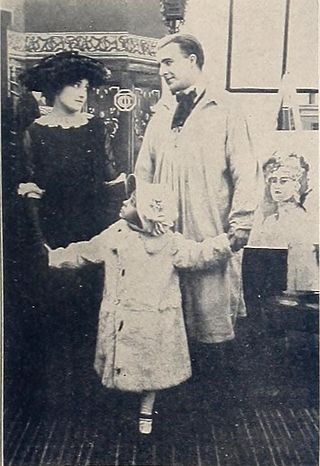
Adrift is a 1911 American silent short drama film produced by the Thanhouser Company and directed by Lucius J. Henderson. The film depicts a story of a young artist whose lack of success leads him to attempt suicide. Before he can carry out the act, his daughter follows and stops him. He confesses to his wife and she thanks her child, providing the inspiration for the artist to complete a great painting. It brings him success and he grows distant from his wife and becomes interested in another woman whom he was commissioned by. Once again saved by his daughter's actions, whose crying moves the woman to break off the relationship with the artist. The artist destroys the painting and learns a moral lesson.

St. Elmo is a 1910 American silent short drama produced by the Thanhouser Company. The scenario was adapted by Lloyd Lonergan from Augusta Jane Evans's 1866 novel of the same name. Frank H. Crane and Anna Rosemond play the leading roles in the simplified plot that was reliant on inter-titles to tell the story. The film follows St. Elmo who is engaged to his cousin Agnes, being betrayed by his friend Dick Hammond who has an affair with Agnes. St. Elmo challenges and kills Hammond in a duel. A young girl, Edna witnesses the duel and leads Agnes and the sheriff off the trail. St. Elmo disappears and returns five years later to woo Edna. She rejects then accepts his affections only to stop him from committing suicide. The production was met with mixed reviews by critics, but was successful. The film is presumed lost.

She's Done it Again is a 1910 American silent short comedy written by Lloyd Lonergan and produced by the Thanhouser Company in New Rochelle, New York. A thief named Sikes decides to rob a society woman who falsely claimed to have been robbed when she in fact pawned her jewelry. A gentleman thief strikes and robs her, but no one believes her. The thief is caught only by a clever detective. The film was the third release of the Thanhouser company and featured the leading players, Anna Rosemond and Frank H. Crane. The film was met with positive reviews, but is presumed to be lost.
The Thanhouser Company was one of the first motion picture studios, founded in 1909 by Edwin Thanhouser. It operated until 1920. It produced over 1,000 films, but several dozen of the films were of small filler subjects, educational or documentaries. Many of these smaller subjects were listed as a quarter or half a reel in length and received very little critical review or analysis by film critics and the media.
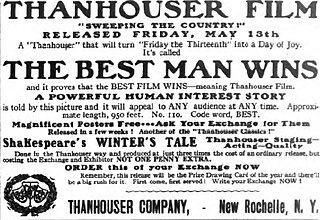
The Best Man Wins is a 1910 American silent short drama produced by the Thanhouser Company. The film features Thanhouser's leading players Anna Rosemond, Martin Faust, Frank H. Crane and Marie Eline in a drama about morality. Two suitors are vying for the hand of Julia Seaton and propose to her on the same day, but she asks for a month to decide between them. In the time, the caliber of both men are tested when asked by a young girl, named May, to help her dying mother. The doctor refuses to help, and the lawyer offers his assistance, but her mother soon dies. The orphan is taken in by the Seaton family and personally attests to the character of both men when Julia Seaton has to choose between her suitors.
Thelma is a 1910 American silent short drama film produced by the Thanhouser Company. The story was based on Marie Corelli's 1887 novel of the same name, it focuses on a Norwegian maiden who meets Sir Phillip and the two are wed. Lady Clara conspires to ruin the marriage and tricks Thelma with a letter purported to be from her husband. Thelma returns to Norway and to the death of her father. Thelma, alone in the world, prays at her mother's grave for strength. Sir Phillip searches for Thelma, ultimately finding her, uncovers the tricks which have been played on them and they fall back in love. Released on June 21, 1910, the film was met with praise in The Moving Picture World. An incomplete print of the film survives in the Library of Congress archives.

Uncle Tom's Cabin is a 1910 American silent short drama produced by the Thanhouser Company. The film was adapted by from the 1852 novel Uncle Tom's Cabin by Harriet Beecher Stowe. The plot of the Thanhouser production streamlined the actual story to portray the film over the course of a single reel. The film was released on July 26, 1910, on the same day that Vitagraph released the first reel of their own three reel version of Uncle Tom's Cabin. This prompted the Thanhouser Company to advertise against the Vitagraph film by referring to the other as being overly drawn out. The film garnered mixed, but mostly positive reception in trade publications. The film is presumed lost.

The Girl Reporter is a 1910 American silent short drama produced by the Thanhouser Company. The film follows two sweethearts, May and Will, who are reporters for the Daily Wave newspaper. Will leaves the newspaper to work as a secretary to Blake, the commissioner of public works. Blake takes a bribe and blames Will and fires him. May sets out to clear his name and becomes Blake's new secretary. May investigates and clears Will's name while proving Blake's corruption. The film was released on August 16, 1910 and saw a wide national release. The film received mixed responses from critics who liked the acting, but found issues with the staging and the plausibility of the plot. The film is presumed lost.

Dots and Dashes is a 1910 American silent short drama produced by the Thanhouser Company. May Wilson is a telegraph operator and Jack Wilson is the head bookkeeper of the brokerage office. May teaches Jack how to use Morse code. At the end of the day is called to into the office and learns that something is wrong with the books and he quickly finds the guilty party and confronts him. While he leans into the safe, Bill pushes him inside and locks the safe before fleeing. May, who is waiting for Jack, goes to the office and searches for him. Hearing groans from the safe, she knows he is in danger and uses Morse code to learn the combination and free him. Later, Bill returns to the scene to see if Jack is dead. As he opens the door, the police pop out of the safe and arrest him. The film was released on September 30, 1910 and was met with mixed reviews for the improbable plot and the inaccurate Morse code being tapped out on screen. The film is presumed lost.
Leon of the Table D'hote is a 1910 American silent short comedy produced by the Thanhouser Company. The film follows Leon, a waiter at a table d'hote restaurant who is in love with Rosa, a French cashier at the same restaurant. Leon goes on vacation and poses as a foreign noble, attracts the interest of Violet Hope's mother as a suitable candidate to marry her daughter. While at the beach, Leon is knocked over by a breaking wave and Violet rescues him, earning Leon's gratitude. Rosa arrives after tracking Leon down and forces him to confess and return to the restaurant. Violet's mother then allows her daughter to marry the man of her choice. No cast or staff credits are known for the production. The film was released on October 4, 1910, and was met with praise by the reviewer of The New York Dramatic Mirror. The film is presumed lost.
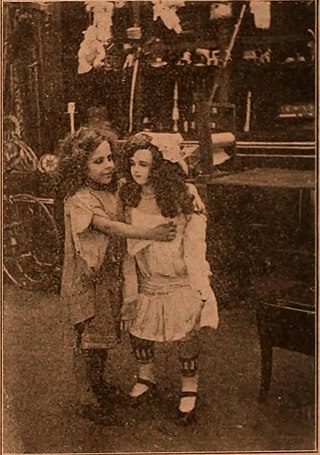
Delightful Dolly is a 1910 American silent short comedy produced by the Thanhouser Company. The film follows Marie Allen, an orphan girl who lives with her grandfather, who sees a large doll in the window of the shop. At night, she sneaks out to visit the shop with the doll, but finds it gone. She sneaks into the shop and ends up hiding in the box, to prevent from being discovered by the store clerk. She is taken to the home of the rich little girl, Daisy. After taking the doll's clothes, Marie hides in the box as Daisy approaches. When Daisy opens the box, Marie acts like a doll. When Daisy takes a break for food, Marie secretly takes the food and drink much to Daisy's bewilderment. Marie's grandfather arrives at the home and explains the situation and Marie receives the doll from the family. Little is known about the production or cast of the film, but Marie Eline played the role of Marie. The film was released on October 14, 1910 and was met with some praise in trade publications. The film is presumed lost.

Mistress and Maid is a 1910 American silent short drama produced by the Thanhouser Company. The film focuses on Nan Willis, a wealthy heiress, who visits a seaside resort with her maid, Susan. The two decide to trade roles and Nan encounters a young lifeguard with whom she falls in love with. Susan plots against Nan to steal her valuables and orchestrates a plot with a lighthouse keeper to lock Nan in the tower for a share of the spoils. Nan's Newfoundland dog is sent on a rescue message and delivers a message to the lifeguard. He arrives and rescues Nan from her jailer before hurrying back to the hotel, catching Susan in the act. Nan decides not to only dismiss instead of punish her maid because she her new-found love more than compensates the hardships she went through. The cast and credits for the film are unknown. The film was released on November 11, 1910, to mixed reviews in trade publications. The film is presumed lost.
The American and the Queen is a 1910 American silent short drama produced by the Thanhouser Company. The film focuses on Maud, the fictional queen of Rumania, who is overthrown by her cousin, Rupert. Maud is thrown into prison after refusing the romantic advances of Rupert. She escapes with the aid of her lady-in-waiting and a priest. A wealthy American named Jack Walton, foils an assassination attempt on Maud and he falls in love with her. Maud is recaptured and set to be executed when the priest comes up with a plan to save her, by marrying Jack and Maud. The ceremony takes place through her cell window, and soon the United States military arrives to save the now wife of an American. Rupert is killed in the ensuing conflict. No known cast or production credits for the film is known. The film was released on November 11, 1910 and was met with neutral to negative reviews by critics. The patriotic element of the film was cited as likely being comical for European audiences and the film was also used as an example of an inappropriate example of American flag-waving. The film is presumed lost.
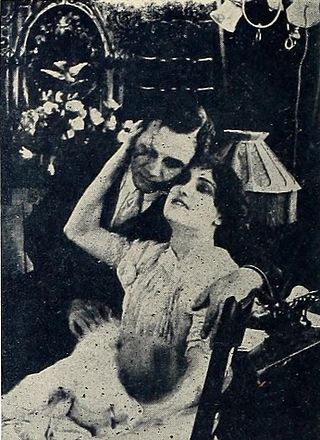
When Love Was Blind is a 1911 American silent short drama film produced by the Thanhouser Company. The film focuses on young blind woman, May Read, who is saved from her burning home by Frank Larson. In the act of saving her, Frank is disfigured, but the two fall and love, marry and have a child. Two years later, the family physician offers to restore May's sight through a surgery. Frank consents despite his fears that May will not love him if she gazes upon his disfigured face. The surgery is a success and the doctor tells May not to remove the bandages. May ignores this warning and is permanently blinded after attempting to gaze at her husband, but she is content knowing her baby is beautiful. Directed by Lucius J. Henderson and starred Lucille Younge, the film was a critical success. The film is presumed lost.
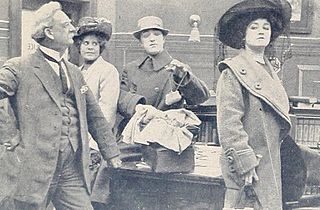
The Norwood Necklace is a 1911 American silent short drama film produced by the Thanhouser Company. It is the third of the four "Violet Grey, Detective" series of films produced by Thanhouser and starring Julia M. Taylor. The film begins with the police being alerted to a female suspect who is believed to have the famous Norwood necklace. The police arrest and search the suspect, but find nothing and release her. Violet Grey has suspicions that the suspect has the necklace and tracks her to a hotel, whereby she disguised herself as a maid. Grey finds the necklace and the suspect is arrested. The film was released on February 10, 1911 and was met with positive reviews. The film is presumed lost.
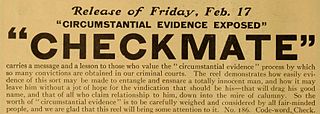
Checkmate is a 1911 American silent short drama film produced by the Thanhouser Company. Focusing on the subject of convictions by circumstantial evidence, the plot has a French baron and an American businessman vie for the affections of an heiress. She chooses the American and the French baron conspires with the heiress's aunt to take revenge. The American falls into their trap and is accused of stabbing the baron by the conspirators. The circumstantial evidence was enough to convict him and he is sent to prison. Through the aid of a homeless doppelgänger who looks like the fiancé, he is substituted in prison and the original forces a confession from the aunt. For his plot, the baron is convicted of perjury and sent to prison. Released on February 17, 1911, the film was a critical failure for its improbable plot and its prison substitution scene. The film is presumed lost.

Washington Crossing the Delaware is the title of three 1851 oil-on-canvas paintings by the German-American artist Emanuel Leutze.


















